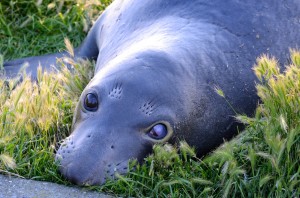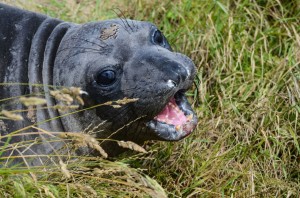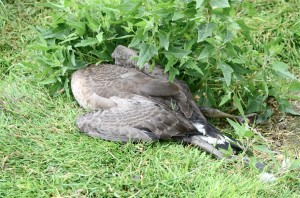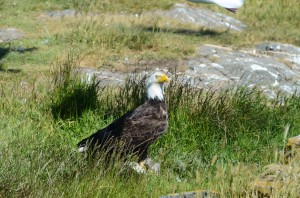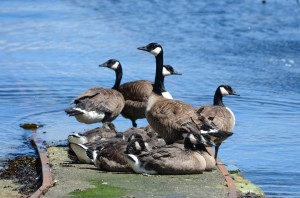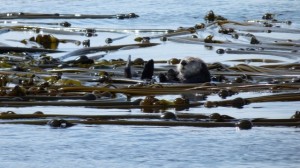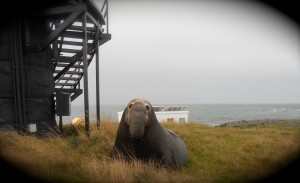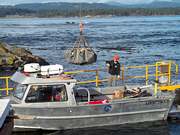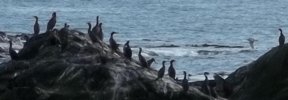And more beautiful than ever!
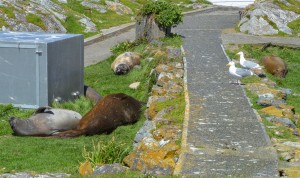
Bertha and gang avoiding the strong Westerlies
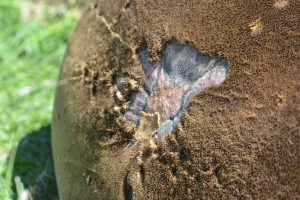
Bertha’s Scar
This morning 5 elephant seals were on the island, probably seeking some degree of shelter from the 35 knot Westerly wind that has been blowing all day. 4 are juveniles, but in the middle of the pile lies Bertha looking sleek and glossy-brown. She is easily identified by the large scar on her chest and her clouded left eye. Last year she arrived on Great Race on April 15th. I think she has been in the reserve for a little while now but I had not been able to identify her while she rested on Middle Rocks.
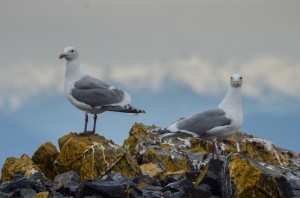
Biding their time…
We appear to have about 300 Glaucous-winged Gulls on the island this spring. My estimate is that there are about 25% fewer individuals than last spring, when I counted about 200 breeding pairs. Other animals noted in the past few days have been several Dunlins, a small flock of Barn Swallows, a Whimbrel and what resembled a Solitary Sandpiper. I also saw for the first time a Mink (Mustela Vison) on Great Race; quite a swim for the little athlete!
Erik and I did an oil and filter change on the generator. Hopefully it will be the last one and we will soon be able to afford to install a wind generator to provide the last 20% of energy we require. We run the generator about 2.5 hours a day this time of year.
We had 3 groups of student this month, 2 roofers, 3 techs from Environment Canada, and several college staff. Tour boats and fisherfolk are being seen more regularly in the reserve as the nicer weather begins. We had to ask one group of fishers to pull their lines and leave the Reserve. Infractions are almost always due to ignorance and I am lobbying the government to post a few signs which, unattractive as they may be, could go a long way towards ameliorating those infractions.
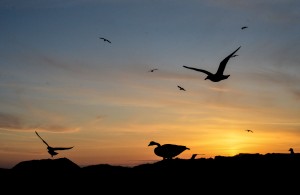
Birdyfull Sunset





